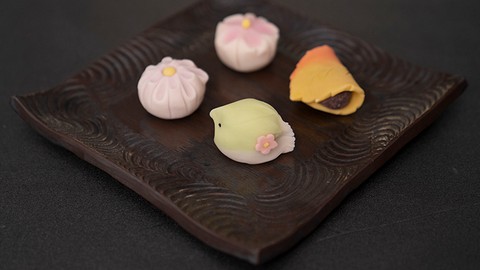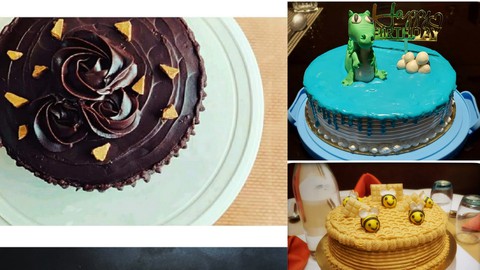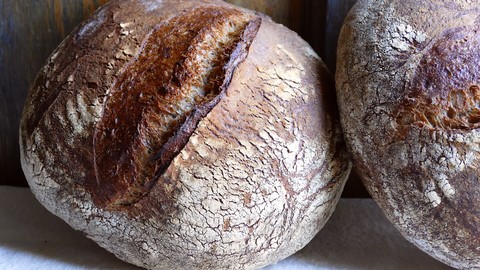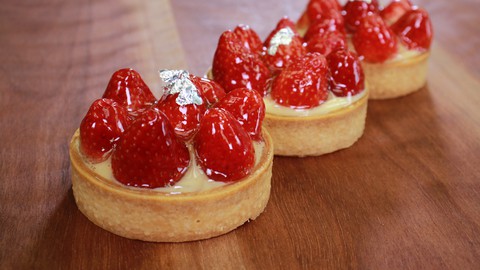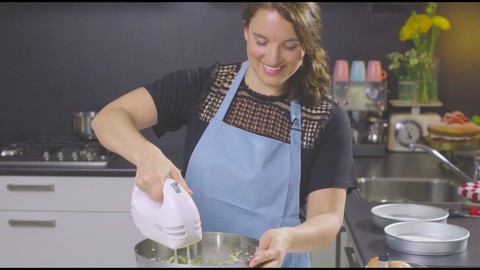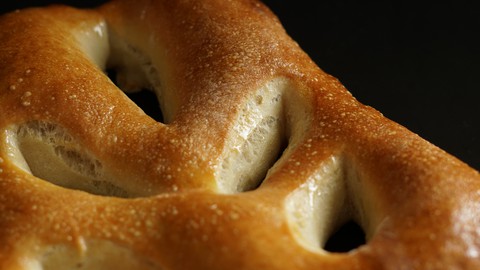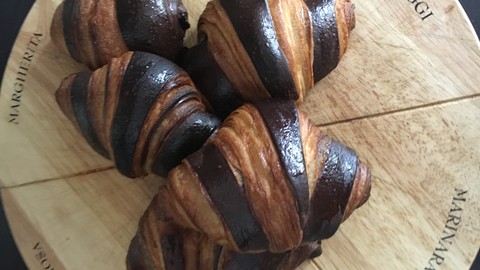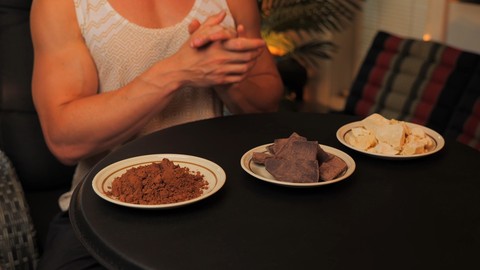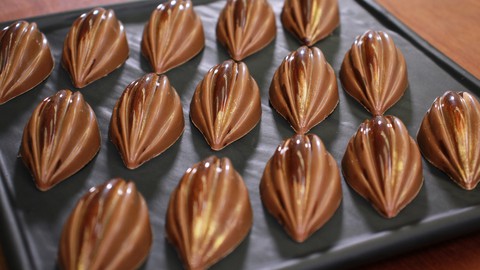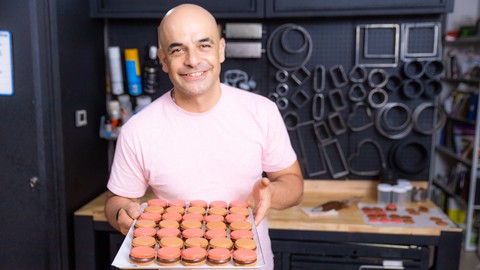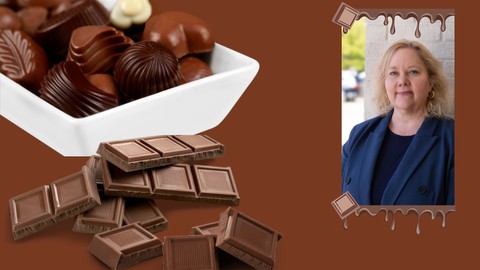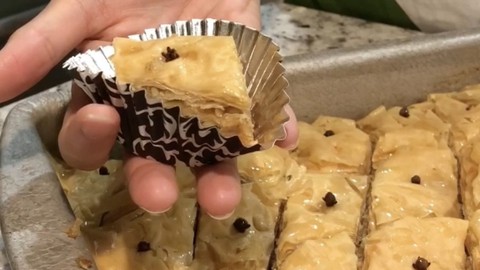What you'll learn
- 🍣 Master the Art of Japanese Cooking
- 🍥 Create Beautiful Wagashi: Learn 4 Unique Nerikiri Motifs
- 🥢 Dive into Mochi Making: Discover 2 Delicious Varieties
- 🍵 Perfect the Preparation of Authentic Matcha Tea
Course Content
Introduction
2 lecturesAn overview detailing the skills you will learn during the Intensive Wagashi and Mochi Making Course.
Meet Irie Mai, a wagashi artist and Japanese cooking teacher based in Tokyo.
Chapter 1: Intro to Wagashi
3 lecturesLearn about the types of wagashi and basic ingredients for making Japanese confections.
Introduces nerikiri wagashi and the four basic techniques and motifs that are covered in this course.
Introduces the two types of mochi that are covered in the course: the classic ichigo daifuku mochi and the modern "mizu shingen mochi," also known as the Japanese raindrop cake
Chapter 2: Making White Bean Paste
1 lectureSweet white bean paste is an essential ingredient in wagashi. In case you can't find it at your local stores, Mai will teach you how to make it from scratch using white lima beans or kidney beans. Download the course workbook for recipes.
Chapter 3: Fundamentals of Nerikiri Wagashi
12 lecturesMai introduces the essential tools for decorating nerikiri wagashi.
Mai introduces the ingredients you will need to make nerikiri wagashi.
Learn how to make nerikiri dough using white bean paste and glutinous rice flour (mochiko).
Mai shows how to use food coloring to make vibrant wagashi.
Mai demonstrates how to create beautiful color gradations.
Mai shows you how to properly wrap the colored nerikiri dough around the bean paste filling, creating a smooth surface for decorating.
Mai teaches a technique that will give your nerikiri wagashi more depth of color.
Mai demonstrates how to make the classic sakura nerikiri design using a triangular stick.
Using a round stick tool, learn how to make a chrysanthemum-shaped nerikiri wagashi.
With a cotton cloth, Mai will show you how to make an uguisu (Japanese bush warbler) nerikiri design.
Using a rolling pin, Mai demonstrates how to make an autumn leaf nerikiri wagashi.
Learn how to properly store your nerikiri wagashi.
Chapter 4: Traditional and Modern Mochi
4 lecturesMai introduces the ingredients and tools needed to make ichigo daifuku (strawberry mochi).
Learn how to make mochi (the base for a variety of wagashi recipes) and create the perfect strawberry daifuku.
Mai introduces the ingredients and tools for making the Japanese raindrop cake ("mizu shingen mochi").
Mai demonstrates how to make a contemporary style of mochi: the Japanese raindrop cake.
Bonus Chapter
1 lectureLearn how to properly whisk a frothy cup of matcha tea, a slightly bitter beverage that complements the sweetness of wagashi.
Summary and Final Notes
1 lectureMai recaps the recipes covered in the course and gives a list of other resources and online cooking classes to continue your Japanese culinary journey.
Description
🥮 Welcome to the Intensive Wagashi and Mochi Making Course! 🎓 This course offers 24 video lectures and a comprehensive PDF workbook filled with exciting recipes. 🥢
By the end of this course, you'll master the art of:
Crafting white bean paste from scratch using lima or kidney beans
Preparing nerikiri dough with white bean paste and glutinous rice flour
Coloring dough and creating vibrant gradation effects
Shaping your nerikiri wagashi using four unique techniques
Designing four exquisite nerikiri motifs: sakura, chrysanthemum, uguisu bird, and autumn leaf
Making two mochi varieties: strawberry daifuku and the Japanese raindrop cake ("mizu shingen mochi")
Whisking a perfect cup of matcha tea 🍵
COURSE OVERVIEW: 🎯
Chapter 1: Discover "What is Wagashi?" Dive into the world of Japanese traditional sweets, with focus on nerikiri and mochi, and explore seasonal nerikiri motifs.
Chapter 2: Master white bean paste making using white lima beans or kidney beans. Learn why this is an essential component in making nerikiri and mochi. Simple steps for creating this delicacy at home!
Chapter 3: Unlock the secrets of nerikiri wagashi. Learn about essential tools, ingredients, and ways to craft colorful dough. Create four stunning nerikiri designs with expert techniques🏆.
Chapter 4: Explore the art of mochi making. Learn to prepare the classic strawberry daifuku mochi and the modern "mizu shingen mochi" raindrop cake. 🍓
Bonus Section: Whisk a frothy, delicious matcha tea, the perfect match for Japanese confections. 🍵
INGREDIENTS NEEDED:
(Need a customized wagashi-making kit? Contact us at info@byfood.com.)
For Nerikiri Wagashi:
- White lima beans or kidney beans (or store-bought bean paste)
- Glutinous rice flour
- Sugar
- Salt
- Food coloring (powder, gel, or liquid)
For Strawberry Daifuku Mochi:
- Glutinous rice flour
- Sugar
- Potato starch (or cornstarch)
- Bean paste (homemade or store-bought)
- Strawberries
For Raindrop Cake:
- Sugar
- Pickled sakura flowers (or any edible flower/fruit)
- Agar
ABOUT MAI IRIE:
👩🍳 Mai Irie is a culinary artist born and raised in Japan, with a degree from Keio University. She transitioned from a successful career at Citigroup and J.P. Morgan to follow her passion for cooking and creativity.
Mai is proud alumna of Yanagihara Culinary School, contributing as an instructor and planner for Japan's largest cooking school. Since 2017, Mai has shared her love for wagashi through teaching and publications in ELLE Japan and other magazines.
Who is this course for?
- Anyone eager to delve into Japanese cuisine and sweets culture!
Course Reviews
-
😀 Eva Yuliana
-
😀 Polly Wong
-
😀 Sarah K
Der Kurs enthält alle wichtigen Infos und trotzdem sind die Videos sehr kurz. Das Handbuch als PDF ist super.
-
😐 Shrirang Phadke
The presentation is great, but the measurements are not mentioned in the course.
-
😀 Priyanka Sharan
-
😀 Micah Bishop
-
😀 Andreas Alvin
Great class and everything is delicious
-
😐 Vera B
-
😀 Abdelmoniem Elbaz
-
😀 Isabella Valencia Kho
-
😀 Tang Jui Guan
-
😀 Mariel Suenaga
It is very easy to understand
-
😐 Fatemeh Abdollahnazhad
-
😀 Bee S.
It's a very clear course, but it feels like YouTube videos, it's too fast.
-
😐 Lan le
It just has the way to make it, no has recipes in detail h to make it exactly. No recipes, no warning about mistake.
-
😀 Duongjai Kornkosiyakarj
love it.
-
😀 El
-
😀 Mark Daniel Jacoby
The Wagashi is really good!
-
😀 Stephany Gomez
I really enjoyed learning and having knowledge regarding Wagashi and Mochi making. In fact, mochi is one of my favorite desserts.
-
😀 Maria Lynette Lacson
-
😀 Kitty Lau
Yes
-
😀 Nunzia Esposito
-
😀 Pang Wei Lee
-
😀 Monique Chedid
-
😀 Mark Wickremasinghe
-
😀 Rika Okazaki
-
😀 Cassandra Williams
Generally it's quite good, although I feel like more time should be spent on each section, and maybe a little history of wagashi would be nice. The tutorials would also benefit from having more than one camera as the main camera, so there aren't issues with needing to refocus when food is being plated by the presenter, or the presenter moves further away from the work area (to use the stove top for example).
-
😀 Wong Lu Lu
-
😀 Mildred Lee
-
😀 Lena Da Ros
-
😀 Brenda Tata
-
😀 Ningrong Cai
-
😀 Mai Anh
-
😀 Samilla Pereira Marely
-
😀 Micaela Froman
Precise, well detailed explanations, yet simple and easy to understand. Loved it. I always wanted to learn how to make wagashi, now I do! Thank you :)
-
😀 Frances L Herrera-Lim
-
😀 Miriam Jorge Ramos de Sousa
-
😐 Paolo Rosina
-
😀 Mei Yen
-
😀 Kong Hui Teng
-
😀 Ngoc Nguyen
-
😀 Chau Shuk Wah
-
😀 Brian Robinson
-
😀 Miranti Maruto
-
😀 Yong Yik Weng
-
😀 Sanna Jidinger
-
😀 Wendy Toh
-
😐 Caroline vang
-
😀 Phebe Kristyanti
-
😀 Isaac Angel
-
😀 Julie chan
-
😀 Li Weiyi
-
😀 Marilyn Ho
-
😀 Rebecca Lo
-
😀 Donna Chiang
-
😐 Sanddy Ngu
-
😀 Verawaty Suman
-
😀 Ms Serene Ho
Easy to understand
-
😀 Andrea M
I have completely enjoyed this course...hope Mai consider a next level one for those like me who cannot meet her in Japan and will love continue learning from her =)
-
😀 Katherine Sinon
I've always wanted to learn how to make Wagashi and this is a great beginner's class. She doesn't leave any important details out when preparing the dough or the an, and she is easy to follow.
-
😀 Thiemba Ferguson
-
😀 YuMei Rogers
-
😀 Poppy Sherwood
-
😀 Rebecca Foster
-
😀 Ning Ting
Course content is good . Beginner can follow the easy step by step guide.
-
😀 Heidi Martinez-Reyes
-
😀 Tamsin Alexandra Fountain Dearnley
-
😀 Somer stampley
-
😐 Chee
Not enough details
-
😀 Hiba Bashari
i like the explanation and easy steps to follow, however the changing of the camera from side to front in the first chapters, when info. was given, was very disturbing
-
😀 Iliana Clarisa Alemany
-
😐 Amelia
-
😀 Suphawit Wotisomboonphun
-
😀 Elena Dexter
I am enjoying the course! The videos are beautifully shot and I appreciate that they are considered, it’s easy to go through.
-
😀 Audrey Bigger
-
😀 Elle Nguyen
-
😀 Elminah
tq
-
😀 April Brady
-
😀 DeLAurore Kyly
-
😀 Nina Ratanachan
-
🙁 Ahmed Khattab
-
😀 Kavis Tong
-
😐 Jihye Bajkor
-
😀 Yonghong zhang
It is a good course
-
😀 Kanna Watanabe
-
😀 Muriel Foucher
-
😀 Robert Lee
I enjoyed the course. I have started studying tea and this has given me an insight to preparing the Okashi.
-
😐 Karol Kobashikawa
Me gusta la claridad y el paso a paso que explica la maestra. Podría mejorar en agregar las cantidades de los ingredientes.
-
😀 Matthew estero
-
😀 Chien Yuen Tai
-
😀 Phyllis Wong
Great course, easy to understand!
-
😀 Concon Beredo
-
😐 Makiko Ogawa
-
😀 Katherine Frances de la Rosa-Ignacio, MD, FPDS
-
😀 Ranjit Kumar Aluri
-
😀 Larysa Gudz
-
😀 Piera Coppola
-
😀 Samuel Coor
-
😀 Ng Beng Choo
-
😀 Marilou Keck

